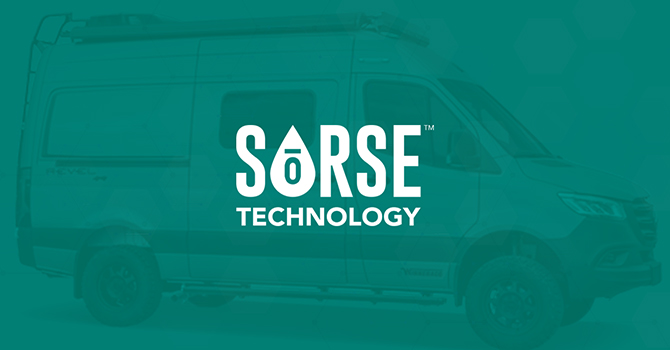In early May, Zach Hershberger, an operations manager at Seattle-based water-soluble emulsion supplier SōRSE, received a request from one of his top accounts. California-based Cann, makers of cannabis-infused social tonics (CBD and THC), were looking to make good on their long held aspirations to expand into Nevada, but, because of laws requiring all cannabis to be processed in the state in which it is sold, the move would force it to find another manufacturer. Could anything be done?
A few intensive brainstorming sessions later, Hershberger was a man on a mission, headed down I-95 South in a CEO Howard Lee’s new Winnebago Revel van packed with equipment pulled from the Washington facility. Working over the course of three days, he and the team managed to produce a six-month supply of emulsion for Cann’s Nevada business.
What began as a quick on-site fix has evolved into a new way for SōRSE to grow its business with Cann and other clients at a time when CBD and cannabis co-packers are unevenly distributed and regulated across the country. Since that first test in May, Hershberger said that SōRSE has done about a dozen mobile runs, averaging more than one per month. The “canna-bus” venture has taken SōRSE to far flung states like Rhode Island, Massachusetts, Maryland and Washington, D.C.
“Until the first successful run was completed, we were under the impression that we would have to invest a ton of money in every state that we wanted to be in and set up a permanent location,” Hershberger said.
To book a session, clients need to have meet SōRSE’s minimal facility requirements — “some electrical supply stuff and a couple of tables in a place with low foot traffic,” Hershberger said — and to be a licensed provider of the extract to be converted into a water soluble emulsion. Since in this case the company is not sourcing the material itself, he noted, it can only provide guidelines as to what raw material will provide the best results. The final product is an emulsion which can be used as an additive in CPG or simply sold as an ingredient.
“I think what people really like about it is that it’s simple,” he said. “We’re not trying to get a stake in your brand, we’re not trying to be paid royalties off a sale of our emulsion. We’re just trying to offer the opportunity to make products with a top of the line water soluble format and to be able to wholesale our emulsion to other clients in your state. We just charge a conversion fee for the distillate that is provided by the license.”
However, the bulk of the logistical burden lies on SōRSE. Before heading to a site, the company ships two crates to the location, one with pre-preparation ingredients and another with all the required equipment, ranging from beakers to buckets to pipettes and hairnets. But the van also carries some of the more sensitive machinery that cannot be shipped, compounding the risk of damage or accidents. The development of the mobile units has also stressed the company in unexpected ways. While boasting a large team working in science and R&D, SōRSE’s operations division is relatively lean, meaning putting one of its operators into the field for three to five days at a time can be particularly costly. Differences in individual state regulations — some require a separate certification for anyone who actually touches the plants, for example — complicate matters further.
For both SōRSE and its clients, the shift to mobile units feels like a step towards growth rather than an end unto itself. The company’s three permanent facilities in Washington, Oregon and California reflect the disproportionate maturity of the West Coast cannabis industry, which is also home to cannabis-focused beverage co-packers such as Spacestation. In states with less developed recreational markets, the ability of pioneer brands to produce quality products while adhering to strict manufacturing regulations is critical to stimulating acceptance and growth for cannabis CPG. For SōRSE, each stop on the bus represents another opportunity to make progress on that front.
“Not everyone wants to get into making their own water soluble emulsion unless they are really serious,” he said. “We run across people who have tried before and end up with a substandard product, and it shows. That’s part of our market — those people who have either thought about it and don’t want to invest in equipment, training. It’s a lot of time and effort, and not in the typical processors wheelhouse.”
